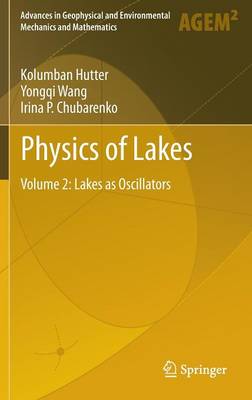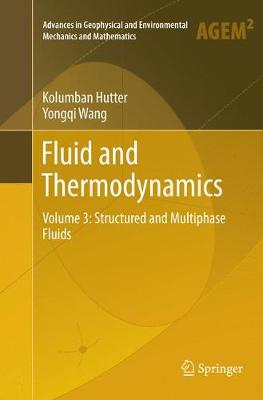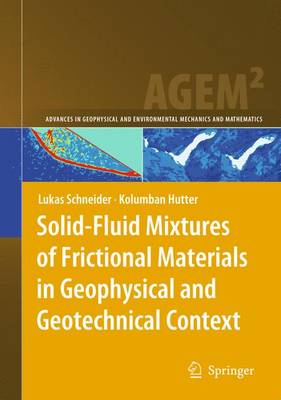Advances in Geophysical and Environmental Mechanics and Mathematics
1 primary work • 4 total works
Book 2
Physics of Lakes
by Kolumban Hutter, Yongqi Wang, and Irina P. Chubarenko
This third volume describes continuous bodies treated as classical (Boltzmann) and spin (Cosserat) continua or fluid mixtures of such bodies. It discusses systems such as Boltzmann continua (with trivial angular momentum) and Cosserat continua (with nontrivial spin balance) and formulates the balance law and deformation measures for these including multiphase complexities. Thermodynamics is treated in the spirit of Müller–Liu: it is applied to Boltzmann-type fluids in three dimensions that interact with neighboring fluids on two-dimensional contact surfaces and/or one-dimensional contact lines. For all these situations it formulates the balance laws for mass, momenta, energy, and entropy. Further, it introduces constitutive modeling for 3-, 2-, 3-d body parts for general processes and materially objective variable sets and their reduction to equilibrium and non-equilibrium forms.
Typical (reduced) fluid spin continua are liquid crystals. Prominent nematic examples of these include the Ericksen–Leslie–Parodi (ELP) formulation, in which material particles are equipped with material unit vectors (directors). Nematic liquid crystals with tensorial order parameters of rank 1 to n model substructure behavior better, and for both classes of these, the book analyzes the thermodynamic conditions of consistency.
Granular solid–fluid mixtures are generally modeled by complementing the Boltzmann laws with a balance of fluctuation (kinetic) energy of the particles. The book closes by presenting a full Reynolds averaging procedure that accounts for higher correlation terms e.g. a k-epsilon formulation in classical turbulence. However, because the volume fraction is an additional variable, the theory also incorporates ‘k-epsilon equations’ for the volume fraction.
Solid-Fluid Mixtures of Frictional Materials in Geophysical and Geotechnical Context
by Lukas Schneider and Kolumban Hutter
Continuum Description of Granular Materials
by Sergio H. Faria, Kolumban Hutter, Nina Kirchner, and Yongqi Wang
A thematic introduction to the modern theory of continuum mechanics and thermodynamics is presented from the viewpoint of granular and porous materials. In the approach taken here, granular and porous media are treated as continuous macroscopic systems of which the overall response is significantly influenced and determined by microstructural effects. In the continuum mechanical modeling, those microscale effects are captured by the introduction of so-called internal variables which account for geometric and material inhomogeneities or the multiphase nature of granular mixtures. Describing the evolution of such internal variables by additional balance laws, the resulting continuum-thermodynamical system requires careful analysis, including, e.g. the application of the entropy principle of Muller with the corresponding approach of exploitation as suggested by Liu. The book is self-contained and addresses an interdisciplinary audience including civil and geotechnical engineers, physicists, applied mathematicians, soil mechanicians and continuum mechanicians.



